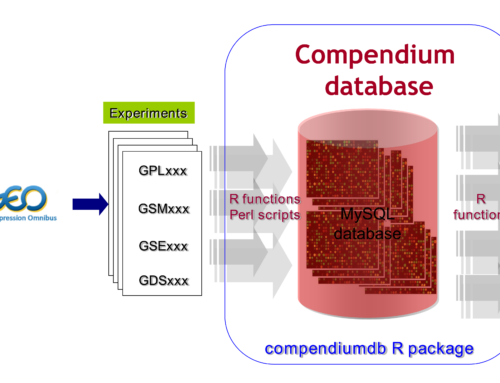Short history of bioinformatics in the Netherlands, with a strong focus on the birth of NBIC
In the early days there was a small computational biology community in the Netherlands. Prof. dr. P. Hogeweg (University of Utrecht) was one of the first to work on Theoretical Biology and already part of her early work would now be referred to as bioinformatics. Prof. dr. J. Leunissen (Wageningen University) was the first Dutch researcher who received a PhD in bioinformatics from the Department of Biochemistry, Radboud University, 1989; on a thesis titled “Computer applications in protein and nucleic acid sequence analysis”. In 1985 the Computer Assisted Organic Synthesis/Computer Assisted Molecular Modelling Centre (CAOS/CAMM) was founded and was headed by Dr. J. Noordik. At the beginning, the emphasis of the institute was on small-molecule services, but bioinformatics has always been part of the service. Especially, Leunissen, who became responsible for the Bioinformatics Section of CAOS/CAMM, and Noordik played an important role in building a small national bioinformatics centre. In 1999, the centre was reorganized, the number of staff involved in bioinformatics increased and the emphasis shifted from small molecules towards bioinformatics. At the same time, the institute was renamed the Centre for Molecular and Biomolecular Informatics (CMBI) to express this shift in focus. Prof. dr. G. Vriend was appointed as director of the CMBI in 1999.
The establishment of bioinformatics in the Netherlands, including the CMBI and the Netherlands Bioinformatics Center (NBIC), was also the result of earlier efforts prior to 1999 of Prof. dr. H. Berendsen and Prof. dr. C. Buys (both University of Groningen). They recognized the future key role of bioinformatics for life science research at a time when the Dutch research efforts in this field were at a relatively low level. At the same time Prof. dr. J. de Vlieg (then Unilever, later Organon/CMBI) also recognized this situation and he became the driving force to convince the ministry of Eduction, Culture and Science/NWO that radical steps were needed. The efforts of these people triggered a cascade of events.
In 1999 a KNAW committee chaired by Berendsen wrote the report ‘Bioexact‘ in which this committee recommended strong stimulation of bioinformatics research and education and urged the Government to take responsibility for an adequate infrastructure. In December 2001 the Royal Netherlands Academy of Arts and Sciences (KNAW) and the Dutch Organization for Scientific Research (NWO) organized a workshop ‘The future of bioinformatics in the Netherlands’. This workshop served as input for the July 2002 position paper ‘De toekomst van de bioinformatica in Nederland’ (the future of bioinformatics in the Netherlands). This paper expressed the vision of the NWO/KNAW committee, chaired by Prof. dr. P. van der Vliet from the University of Utrecht, regarding the position of bioinformatics in the Netherlands. This NWO/KNAW committee had strong interactions with the NWO-BMI (Biomolecular informatics) program committee, chaired by De Vlieg, who coordinated the first bioinformatics funding programme in the Netherlands. The position paper described the initiatives and actions that would be necessary to strengthen the Dutch bioinformatics community and the Dutch international position. This report served as input for the Netherlands Genomics Initiative (NGI) to initiate bioinformatics activities as part of their strategy.
The early developments in bioinformatics ran parallel with the development of several Dutch genomics initiatives. The importance of Genomics (including bioinformatics) was only recently acknowledged by the Dutch government. In June 2000 a report ‘Strategisch actieplan genomics’ (strategic action plan genomics) was handed over to Ministry of Economic affairs and the Ministry of Education, Culture, and Science (OC&W) in the Netherlands. This report was written by two groups consisting of members of the scientific community as well as the industry as a follow-up on a technology workshop organized by the Ministry of Economic Affairs. Subsequently, the committee Wijffels (chaired by Dr. H. Wijffels), was asked to advise the government about this strategic action plan genomics and this advice was provided to the government in April 2001. This resulted in the report ‘Kabinetsstandpunt Genomics‘ (Cabinet point of view regarding genomics) in June 2001. This report discussed and proposed the funding needed to start the national genomics activities and proposed to establish an organization (which became the ‘National Genomics Initiative’, NGI) to develop strategies and activities for genomics in the Netherlands, and to subsequently coordinate those activities. This required a significant investment from the government. The Cabinet also agreed with the vision of the Commission that genomics, including bioinformatics, was underdeveloped in the Netherlands, and it “sees the development of genomics and bioinformatics as very urgent and an important priority”. The Cabinet instructed the Netherlands Research Organization (NWO) to install the Netherlands Genomics Initiative for Genomics and made significant funds available.
NBIC’s early history and its mission in historical and future context
In the period 2002-2003 the Dutch bioinformatics community started to grow and NGI initiated its first bioinformatics activities. This initial phase of the Netherlands Bioinformatics Centre was guided by a consultancy agency under supervision of its director J.W. Tellegen who was hired as consultant by NGI. In this period NBIC was formally established as a foundation under auspices of NGI (February 2003). The most prominent activities of NBIC in this phase were the establishment of a bioinformatics service organization (Bioinformatics Application Service Provider, BioASP) and the formulation of a national bioinformatics research programme (BioRange). Vriend was the driving force behind the first BioRange proposal, which was written by Vriend, Berendsen, Prof. dr. Bob Hertzberger and Tellegen. This first proposal was offered to the government in February 2003. At the same time, the BioASP, led by Tellegen, formally established the Foundation NBIC as a central organization that provided bioinformatics services to the scientific community, including, of course, the genomics field. These activities included several contracts with software companies (e.g. Rosetta Resolver, Oracle, Portal technology) that used a considerable part of the available NBIC budget. Although BioASP aimed to contribute to the establishment of a bioinformatics community, this turned out to be difficult because there was no consensus, coherence, or collaboration in the field. More importantly, the Dutch genomics community was not yet convinced of the importance of bioinformatics and, consequently, a very limited participation in the BioASP initiative resulted. Nevertheless, a range of activities was initiated and NBIC started to take shape.
The BioRange grant was awarded on February 2004 under the condition that the programme was defined more concisely. Tellegen was hired to start the NBIC organization but lacked the domain specific background to build a scientific organization and research programme. Therefore, Hertzberger was appointed as Scientific Director a.i. in February 2004. Hertzberger was the ideal candidate because of his network and experience with the implementation of large scientific research programmes that aimed at creating collaborations, and, of course, because he had been involved in the project almost from the beginning. Hertzberger reorganized the scientific management of NBIC and a substantially different course was taken that aimed at organizing the scientific community to establishing a strong bioinformatics community, while spending less money on big (software) projects. A scientific committee was formed with researchers from the Dutch bioinformatics and genomics communities. Vriend became the first member of this committee. De Vlieg and Berendsen became member of the International Advisory Board. In this period Hertzberger, De Vlieg, and Vriend were the driving force behind NBIC and the BioRange research programme. These persons together with the Scientific Committee transformed the original BioRange programme into a programme that met the conditions posed by the government. A redefined proposal (“BioRange: shaping the future of Bioinformatics in the Netherlands“) was presented to the Dutch Government on April 2004 through the NGI, which was finally approved of by the Dutch Government in June 2004.
Since many researchers (e.g. from the genomics Centres of Excellence) had already been involved in the definition of the original grant, it was clear that a large part of the final BioRange budget was to be assigned to these groups. Subsequently, Hertzberger implemented the process of “drawing rights”, which did define the amount of funding for each participant, but only under the condition that the participants worked out their project(s) in line with BioRange strategies and objectives. Hertzberger and the Scientific Committee took care of the scientific project selection. This resulted in a large range of research projects that simultaneously created a bioinformatics community and collaborations with the genomics community. Towards the end of 2005, over 70% of the BioRange positions were filled and 26 organizations were participating.
In March 2004 Tellegen transferred his tasks to Dr. K. de Groot who was for a short period appointed as managing director a.i. De Groot started to redefine and downscale the BioASP activities to allow for the implementation of a more adequate research support programme (BioAssist). In January 2005, De Groot transferred his tasks to Dr. R. Kok who became the new managing director of NBIC. Until March 2005, the management support of NBIC was still carried out by Tellegen and his agency (Ferendi B.V.) after which the NBIC Office at the CMBI in Nijmegen took over. Kok rapidly streamlined the NBIC organization. Kok and the NBIC Office took care of the communication with participating organizations, the network of financial contacts, the formalisation of the project grants within BioRange and a range of other activities. In addition, Kok formalized the BioRange consortium by establishing a consortium agreement (currently being signed by all participants) with NBIC as coordinating body.
Period 2006 – and further
Early 2006 Hertzberger retired and in March 2006 Prof. dr. A. van Kampen (who was already member of the Scientific Committee) became the new Scientific Director of NBIC while Hertzberger became Deputy Scientific Director specialized on VLe and BioAssist. This prevented the loss of his expertise, while allowing Hertzberger to concentrate on the implementation of Action Line 2 (bioinformatics research support). Van Kampen concentrates on the daily scientific management of BioRange, and the initiation of new scientific activities such as computational life sciences.






